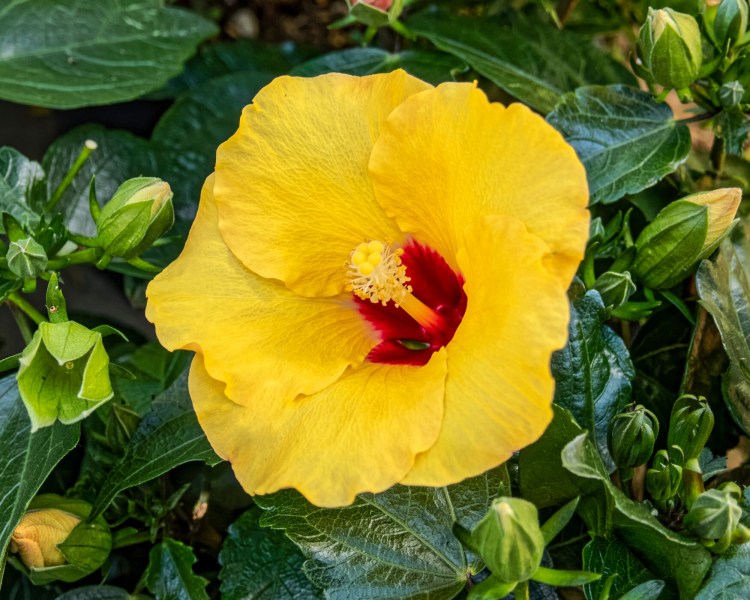Leave the beach, the coconut trees and the Mai Tais to others. One thing I learned on my Hawaiian vacation? Lumber-producing trees don’t grow in Hawaii.
If someone living there wants to build the sort of wood-frame house that is typical in Maine and much of the continental United States – and we did see a few of them on our recent trip, mostly old wooden bungalows – the lumber must be imported (which doesn’t come cheap).
A lot of trees grow in Hawaii, of course, many producing such valuable products such as coconuts and chocolate. But they don’t produce lumber.
While taking a cruise that included stops on four of the seven major Hawaiian islands, my wife, Nancy, and I visited Haleakala National Park, centered around a now-dormant volcano on the island of Maui. It rises more than 10,000 feet, although we made it only a few hundred feet below that to look into the dormant volcano’s crater. (I thank Nancy for putting up with my volcano obsession on this trip. We also visited Kilauea, an active volcano on the Big Island, but not Mauna Loa, also on the Big Island, which recently made the news with its eruptions.)
Beginning in 1909, Ralph S. Hosmer, the first U.S. superintendent of forestry for Hawaii, oversaw the planting of a grove of conifers – mostly pines as far as I could tell, but also spruce and cedar – in an area about 7,000 feet high on Haleakala. The idea was that at that height, the trees would grow well and produce good lumber. The trees did grow well, but they failed to produce lumber.
Growth rings are what makes pine and other lumber-producing trees in Maine strong. The trees grow well when it’s warm. When they stop growing in the winter, resin collects under the bark, adding a durable layer when the tree resumes growing the following spring.
Hosmer Grove still exists, but the trees are weak. High winds are blowing them over, our tour guide told us, and the grove is expected to disappear fairly soon.
The Albizia tree, native to Indonesia and Papua New Guinea, is a major problem on four of Hawaii’s islands. These trees can reach up to 150 tall. They grow as much as 15 feet a year and easily out-compete native trees and other plants. Because Hawaii is an island, or rather several islands, the native flora and fauna never developed strong defense mechanisms against competition, so the native plants and animals are especially vulnerable to invasive species.
The wood of the Albizia is also weak, and the trees blow over in high winds, which threatens buildings and power lines. Its seeds are blown by the wind, they float on water, and they are carried by animals, so the tree spreads widely. Even when the mature trees are cut down, new trees can also sprout from the roots.
Our tour guide on Maui pointed out how the tree is rampant in suburban neighborhoods, as well as the island’s natural areas. It costs more than $1,000 to eliminate just a single Albizia. The preferred method, our guide said, is to peel off a one-inch wide strip of the bark all around the tree and paint that strip with glyphosate, or Roundup, a controversial herbicide. Driving through Maui, we saw many dead Albizia towering above the suburban landscapes.
Compared to Albizia, our invasive bittersweet seems like a walk in the park.
Our excursion to visit fern forests and other gardens on Kauai was canceled because high winds delayed our ship from docking, but we did see some huge ferns while visiting and walking to and through the empty lava tunnels at Kilauea. I really enjoyed the multi-tasking.
We also saw a lot of yellow Hawaiian hibiscus, the state flower. Hibiscus is a common ornamental plant on the islands, but not all you see there are native. Here in Maine, we can grow some hibiscus outdoors – the shrub has the common name rose of Sharon, but we can’t grow the same types that grow in Hawaii. The Hawaiian plants do make colorful houseplants here, though.
I had always thought that Hawaii’s prime agricultural crop was pineapples, with Dole as the prime producer. Turns out, that was never accurate. We did not see so much as one pineapple field on this trip to Hawaii. (Nancy and I had seen fields on our previous trip to Oahu in 1970.)
Apparently, Hawaii’s prime crop used to be sugarcane, but a couple of decades ago when it became cheaper to process sugar on the U.S. mainland and in some Asian countries, the industry disappeared. The sugarcane fields are being replanted, often with citrus trees.
Orchids are the state’s prime export, according to some of our guides. We didn’t see any orchids growing in gardens on our trip, but at home in Maine, we’ve purchased Hawaiian-grown orchids before. Another tour guide told us that Hawaii’s prime exports are actually refined petroleum products – although the crude oil that is processed is imported first, before being refined and exported. Definitely not what most tourists think of when they think of Hawaii.
Tom Atwell is a freelance writer gardening in Cape Elizabeth. He can be contacted at: tomatwell@me.com
Send questions/comments to the editors.


